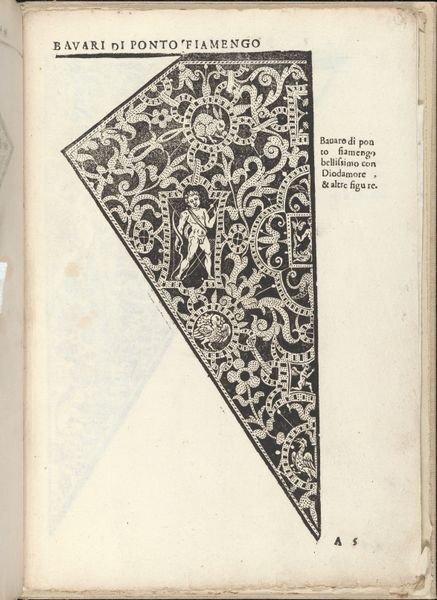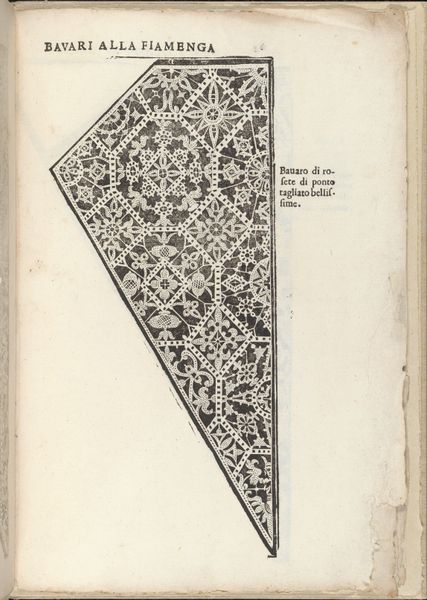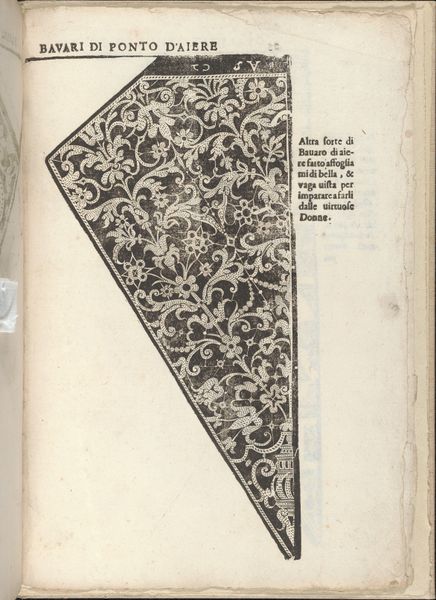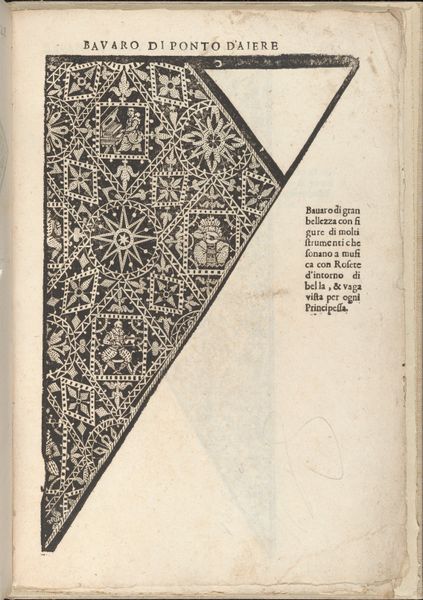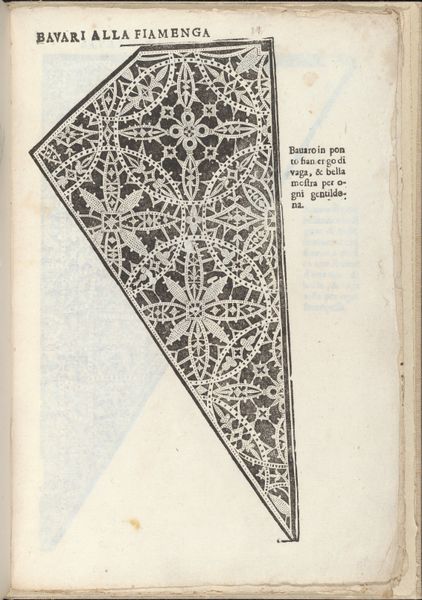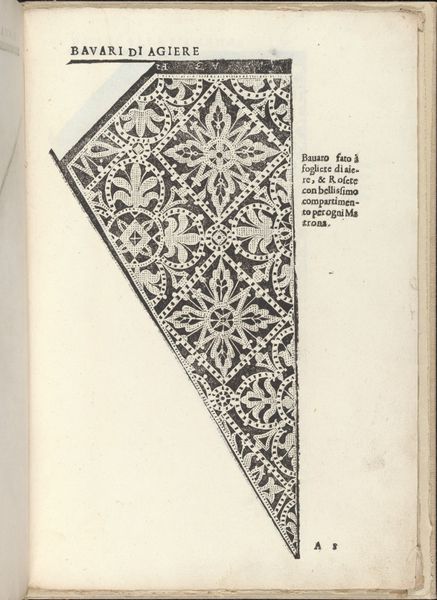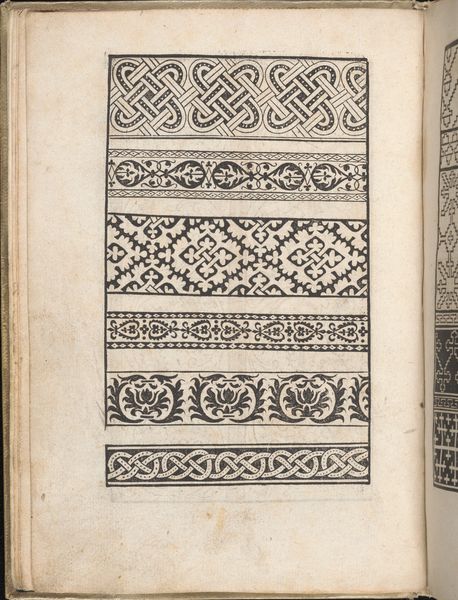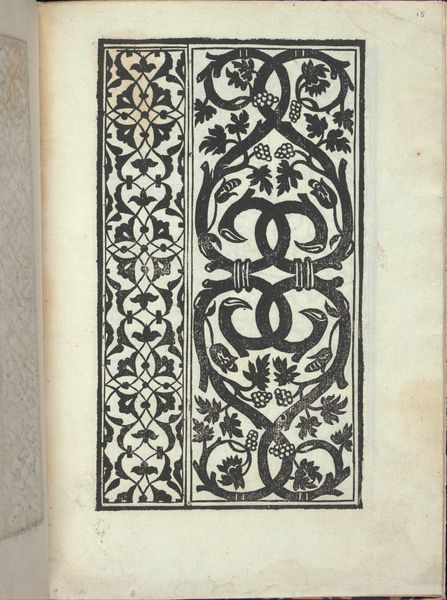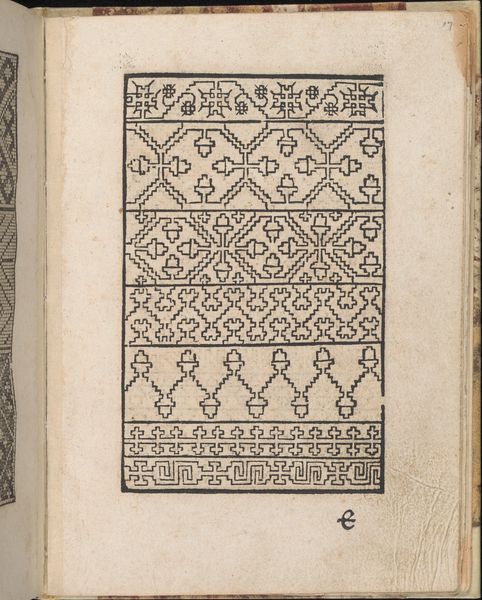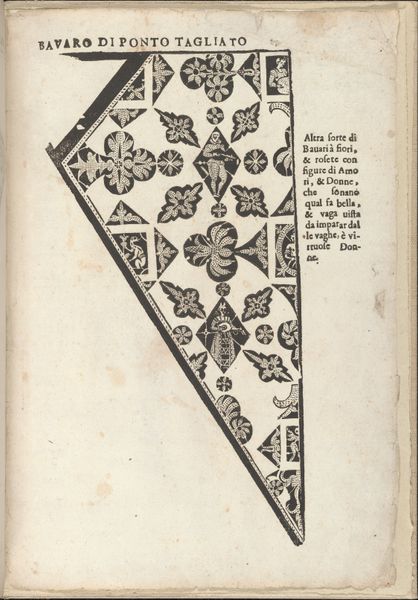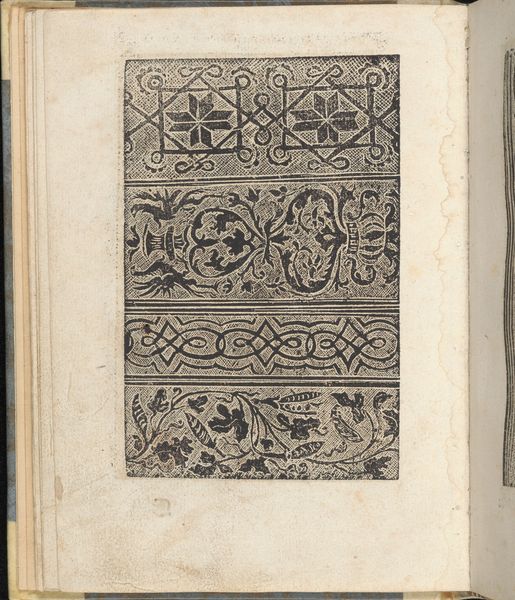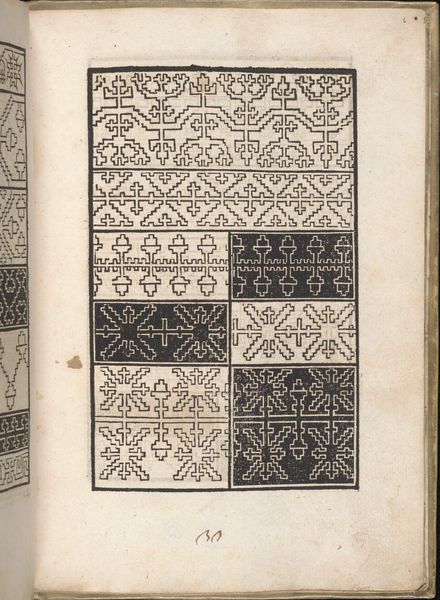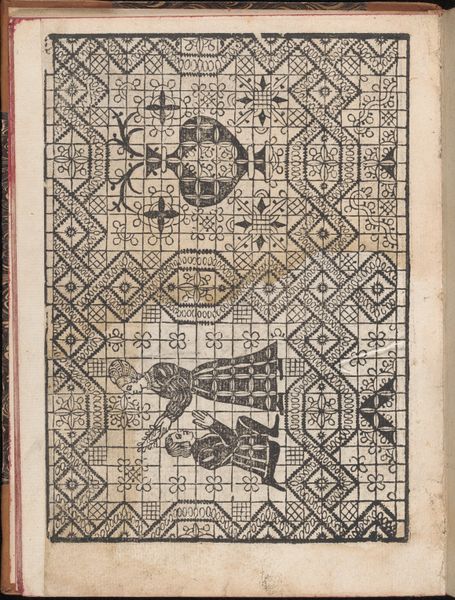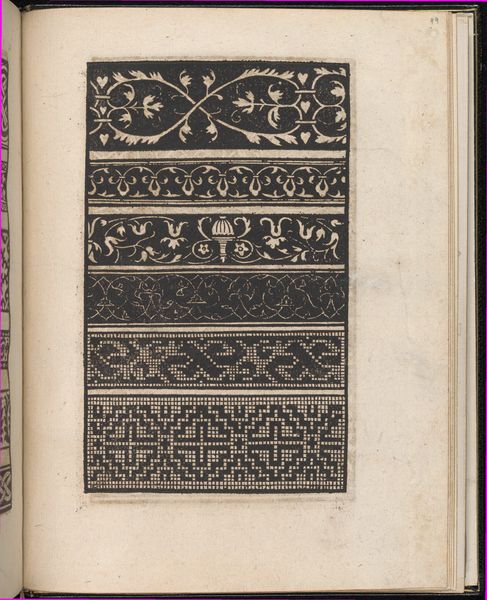
Ornamento nobile...Fatta da Lucretia Romana (Libro V of the Corona), page 3 (recto) 1620
0:00
0:00
drawing, graphic-art, ornament, print, paper, engraving
#
drawing
#
graphic-art
#
ornament
# print
#
book
#
paper
#
form
#
line
#
decorative-art
#
italian-renaissance
#
engraving
Dimensions: Overall: 12 3/16 x 8 1/4 in. (31 x 21 cm)
Copyright: Public Domain
Curator: What strikes me immediately about this ornate engraving is its strange calmness. For something designed, it seems, for "every Empress", it doesn't shout. It's quite peaceful. Editor: You've keyed right into its intriguing tension! We’re looking at a page from Cesare Vecellio's 1620 pattern book, "Ornamento nobile…Fatta da Lucretia Romana". Specifically, this is from Book V of "The Corona" and entitled, "Ornamento per ogni gran Regina," meaning “Ornament for every great Queen". These weren't simply idle fancies; they were templates for lacemakers. Curator: Lacemakers, right. That practical element somehow makes it even more lovely. Thinking about nimble fingers tracing these elaborate lines, bringing the design into three-dimensional existence… I find myself wondering if the lacemakers added their own little flourishes. Editor: Absolutely, I think this craft provided a canvas, even if a structured one, for women's artistry. This image offers an interesting entry into conversations around gender, labor, and design in the Renaissance, and challenges conventional notions of artistic creation, blurring the lines between the decorative and fine arts, you see. Curator: The lines themselves have such energy, a dance between the precise and the free-flowing. You can sense Vecellio delighting in the possibilities of form, the challenge of filling every corner of that almost-triangular space, using fantastic figures and architectural elements in an almost mosaic fashion. Editor: Indeed. And Vecellio situated this ornamental pattern in the lineage of Lucretia, the paragon of Roman female virtue, so as to endow this “ornament for every great Queen" with classical gravitas! In fact, fashion became very tightly linked to sociopolitical identity in Vecellio’s writing and graphic output. Curator: Almost as if each stitch carries an echo of her story... It's quite powerful when you think about it that way. So, next time I see a piece of lace, I'll remember this page and appreciate all it represents. Editor: Absolutely! Recognizing how historical craft practices intersect with female agency, artistic expression, and systems of political meaning helps us reconsider our very understanding of Renaissance culture!
Comments
No comments
Be the first to comment and join the conversation on the ultimate creative platform.
